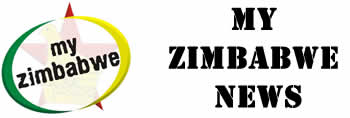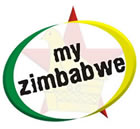The echoes of November 2017 reverberate through the corridors of Zimbabwean politics as Zanu PF structures and affiliates, from the heart of Harare to the rural districts, rally behind President Emmerson Mnangagwa with a fervent plea: “2030 vanenge vachipo” – “He will be in charge until 2030.” This chorus, growing louder with each passing day, seeks to extend the President’s tenure beyond the constitutional limit of 2028, a move that mirrors the events that led to the dramatic downfall of Robert Mugabe, the man Mnangagwa succeeded.
The President, despite hinting at a retirement in 2028, finds himself at the centre of a political tug-of-war, a battle for control over the reins of power that bears an uncanny resemblance to the events that unfolded in November 2017.
It was then that Mugabe, after 37 years at the helm, found himself facing a mutiny within his own party, Zanu PF. The catalyst? The firing of then Vice President Emmerson Mnangagwa, a move that triggered a chain reaction of events that culminated in Mugabe’s forced resignation.
The seeds of dissent were sown in the first week of November 2017 when Zanu PF was poised to hold Central Committee elections, a crucial step in the party’s realignment ahead of the upcoming Special Congress. The party, in October of that year, had resolved to affirm Mugabe as its Presidential candidate for the 2018 elections, elevate Grace Mugabe to the Presidium, and strategise for the upcoming elections.
“We always hold Central Committee elections before going for a Congress and provinces have already been informed about the elections. A circular has been sent to provinces by the Secretary of Legal Affairs Cde Patrick Chinamasa whose department handles the matter,” said the late Simon Khaya-Moyo, then Zanu PF spokesperson, who also read the letter of dismissal confirming Mnangagwa’s firing as Vice President.
The dismissal of Mnangagwa, a move endorsed by all 10 Zanu PF provinces, was fuelled by accusations of disloyalty, disrespect, deceitfulness, and a lack of probity in the execution of his duties. The Politburo, on Wednesday, sealed Mnangagwa’s fate, expelling him from the party.
However, the political landscape shifted dramatically following Mnangagwa’s dismissal. The then Commander of the Zimbabwe Defence Forces, General Constantino Chiwenga, led a military intervention, bringing an end to Mugabe’s 37-year reign. The military takeover, which placed Mugabe under house arrest, sparked a nationwide uprising, with tens of thousands of citizens and Zanu PF members turning against the embattled president.
The Zanu PF Central Committee, having expelled Mugabe as its leader, issued a deadline for his resignation as President, threatening impeachment if he refused. On November 19th, Zanu PF replaced Mugabe with Mnangagwa as party leader, setting a deadline of November 20th for his resignation. When Mugabe failed to comply, a joint session of Parliament convened on November 21st for his impeachment. Facing the inevitable, Mugabe sent a letter to Parliament, resigning the presidency.
The events of November 2017 stand as a reminder of the unpredictable nature of politics. While the current chorus calling for Mnangagwa to stay on until 2030 may seem overwhelming, history has shown that such pronouncements can be as fickle as the political winds.
The Zanu PF structures, which once unanimously endorsed Mugabe’s removal, are now urging Mnangagwa to stay on, echoing the same sentiments that led to Mugabe’s downfall. But in politics, anything can happen, and stomach-influenced decisions or policies can be totally reversed within a very short space of time.
A resounding chorus of support for President Emmerson Mnangagwa’s continued leadership is reverberating across Zimbabwe, with Zanu PF structures from all provinces united in their desire for him to remain at the helm until 2030. This fervent call, echoing through the halls of Parliament and resonating in District Coordinating Committee meetings nationwide, reflects a deep-seated belief in the President’s ability to guide Zimbabwe towards a brighter future.
The movement, encapsulated by the slogan “2030 vanenge vachipo” (2030 will be within reach), transcends the limitations of the current presidential term, which is constitutionally set to conclude in 2028. This unwavering support for President Mnangagwa’s extended tenure stems from a widespread recognition of the transformative strides made under his leadership.
“The Midlands Youth League has resolved that President Mnangagwa should be in charge until 2030, so that he sees his vision coming to fruition,” declared Cde Ernest Dzoro, Chairman of the Zanu PF Midlands Provincial Youth League, during a recent interdistrict conference in Gweru. This sentiment was echoed by Cde Richard Moyo, Zanu PF provincial chairman for Matabeleland North, who stated, “The work he has done in the last six years is great, Zimbabwe has changed completely, and the country still needs him.”
The call for President Mnangagwa’s extended term is not merely a regional phenomenon. It has gained momentum across the nation, with provinces such as Mashonaland East, Masvingo, and Matabeleland North joining the chorus. Zanu PF Masvingo provincial chairman Cde Robson Mavhenyengwa highlighted the tangible benefits of President Mnangagwa’s leadership, stating, “We are seeing the infrastructural projects that are taking place, the developments that are in sync with President Mnangagwa’s vision to make Zimbabwe an upper middle-income society by 2030.”
The unwavering support for President Mnangagwa’s continued leadership has not gone unnoticed within the ruling party. Cde Munyaradzi Machacha, Zanu PF Political Commissar, acknowledged the magnitude of the support during a gathering at Masvingo Polytechnic, remarking, “You have made me happy by what you were singing here, there is nothing that happens in this country without having started in Masvingo.” Cde Machacha pledged to deliver the impassioned message to President Mnangagwa, navigating the delicate task of reconciling the President’s desire to “rest” with the overwhelming public sentiment.
The parallels between the two situations are undeniable. Both Mugabe and Mnangagwa faced pressure from within their own party, leading to political upheavals. The question now is whether Mnangagwa will heed the calls of his supporters and defy the constitutional limits, or whether he will choose to follow the path of constitutionality and bow out gracefully.











